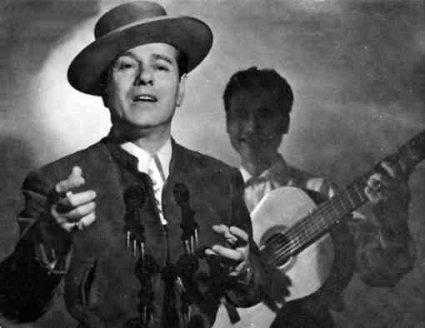Pepe Marchena

Full name
Place of birth
Biography
José Tejada Martín was born in Marchena on the 7th of November 1903 In his village it was easy to become a singer with his capabilities, since many amateur artists practised there Pepe was brought up in this environment after working as a blacksmith in the forge in Plaza Vieja, as a donkey handler, swinherdsmen and as a waiter He first performed in public on turning twelve in the Café de Fuentes de Andalucía At fourteen there was not a village in Sevilla that he didn´t know He began to listen to La Niña de los Peines, Niño Medina, Manuel Torre, Chacón and Escacena At this age he sang for the first time in the Novedades along with Pepe Pinto and El Carbonerillo After being triumphant in Sevilla, he travelled to Córdoba, Málaga, Huelva and Badajoz However it was in 1922 when, encouraged by Rafael Pareja from Triana, he left to Madrid Debuting in the outdoor bar Casa Juan He was then nineteen years of age Flamenco was becoming more popular after the Granada Competition and this meant Pepe Marchena enrolled in the big shows in the bullrings, starting in this manner the flamenco opera From this moment on he worked without stopping throughout Spain in great shows under the name of Niño de Marchena, however the pursuits literally thrash him, meaning the beginning of a whirlwind of insults against him, which unjustly, carry on today He participated in the Copa Pavón in 1925 which Vallejo won However, Marchena was already irrefutably an important figure He recorded numerous albums and continued participating in the great events until the arrival of the war One year before this he filmed his first film, Paloma de mis amores During the conflict he went to La Carolina, and later Linares After the war he returned to Madrid and recorded several more records His style charged with melismas and warbles was never to the liking of the orthodox, but Marchena continued to demonstrate in his recordings his knowledge of song which many of those who criticised him didn´t poses He also stood out for his indescribable garb, as he was always dresses in colours, he used a hat and smoked cigars, giving him a very striking appearance In 1976 he was diagnosed stomach cancer and on the 4th of December of the same year he died in the Sagrado Corazón Hospital in Sevilla His last words, according to his wife Isabel, were devastating She wanted to turn off the light so he could rest and he replied: «Leave the light on, there is a lot of darkness left for me to see »




